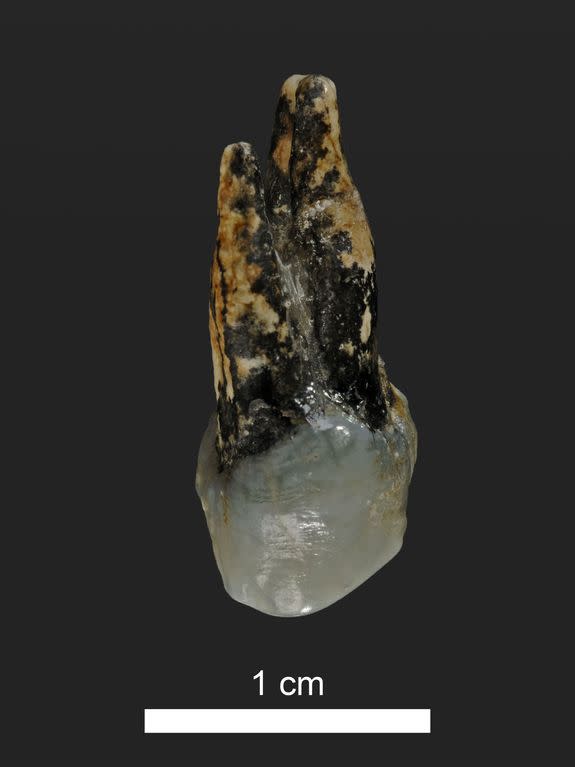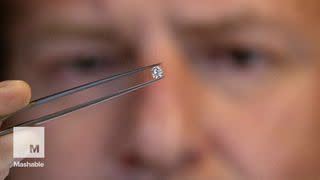7-million-year-old teeth add new layer to human origin story

Ancient tooth fossils found in Europe may represent a new chapter in the human origin story.
The fossils, which date back more than 7 million years, belonged to an ape-like creature named Graecopithecus freybergi, researchers hypothesized in two new papers. A lower jaw bone and upper premolar were found in Greece and Bulgaria, respectively.
The findings suggest that humans split off from great apes several hundred thousand years earlier than previously thought, according to research published this week in the journal PLOS ONE.
SEE ALSO: Humans may have lived in the Americas 130,000 years ago, far earlier than thought
If true, that would mean the first pre-humans developed in Mediterranean Europe — not in sub-Saharan Africa, which is widely considered the birthplace of early humans.
Still, the studies alone aren't enough to rewrite the story of humankind's beginnings.

Image: tim boyle/Getty Images
Outside experts say they are deeply skeptical of the research. They argue the evidence is still too thin to upend decades' worth of fossil and genetic discoveries in Africa.
"The new claims about Graecopithecus need to be treated with a good deal of caution," Darren Curnoe, an associate professor at the University of New South Wales Sydney, wrote in an opinion piece for The Conversation.
"I'm open to the idea that early humans lived beyond Africa, but Graecopithecus falls well short of proving it," he said.
Many researchers assume that human and ape lineages diverged some 5 to 7 million years ago. Charles Darwin initially surmised that humans evolved in Africa, because that's the home of humans' closest ape relatives, chimpanzees and gorillas.
The oldest potential pre-human, a 6- to 7-million-year old named Sahelanthropus, was found in present-day Chad. But the Graecopithecus — nicknamed "El Graeco" — may be even older, according to an international team of researchers.
The Bulgarian premolar dates back some 7.24 million years ago, and the Greek jaw fossil dates back 7.175 million years ago, they said.

Image: Wolfgang Gerber, University of Tübingen
The teams were led by Madelaine Böhme from the Senckenberg Center for Human Evolution and Palaeoenvironment in Germany and Nikolai Spassov from the Bulgarian Academy of Sciences.
Researchers used computer tomography to take cross-sections of the two fossils. They found the roots of premolars were widely fused, a feature that is characteristic of modern humans, early humans, and several pre-human ancestors. Great apes, by contrast, have two or three separate and diverging premolar roots.
The lower jaw fossil also had additional dental root features that suggested its owner belonged to the pre-human lineage.
"We were surprised by our results, as pre-humans were previously known only from sub-Saharan Africa," Jochen Fuss, a doctoral student at the University of Tübingen in Germany who conducted this part of the study, said in a press release.
But Curnoe, the skeptical professor, said studying just one feature — dental roots — on a small number of fossils wasn't enough to prove El Graeco was on Team Human, not Team Ape.
"While our place in the tree of life is now well established — chimpanzees being our closest relatives — the beginning of the human line millions of years ago continues to be shrouded in mystery," he noted.
WATCH:

